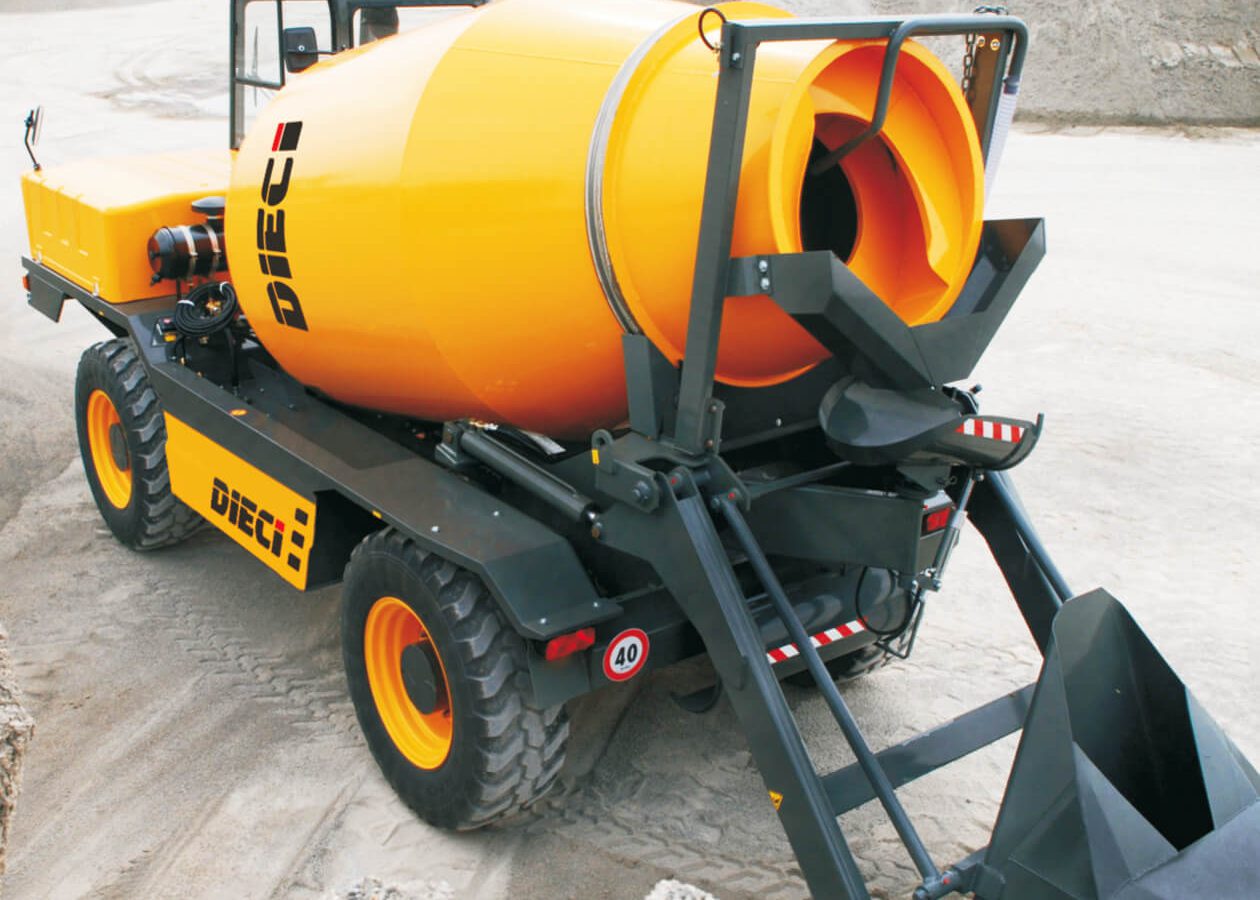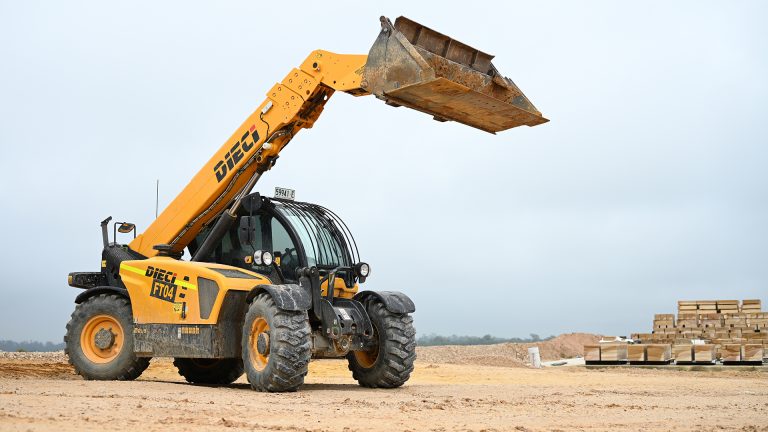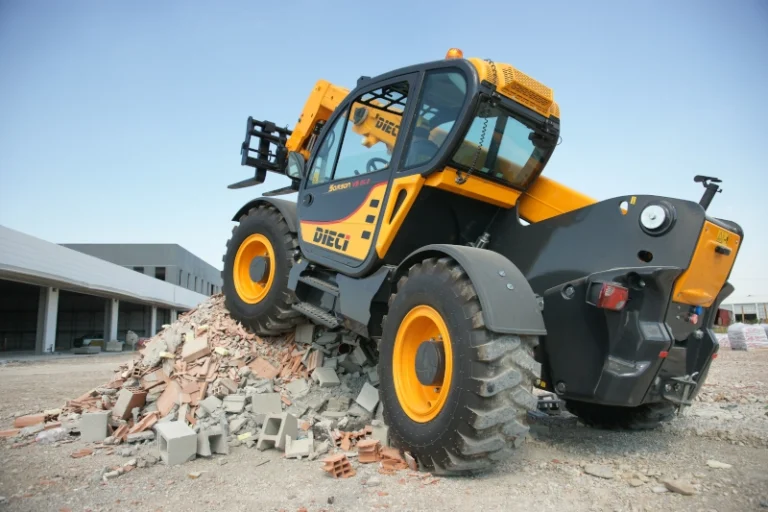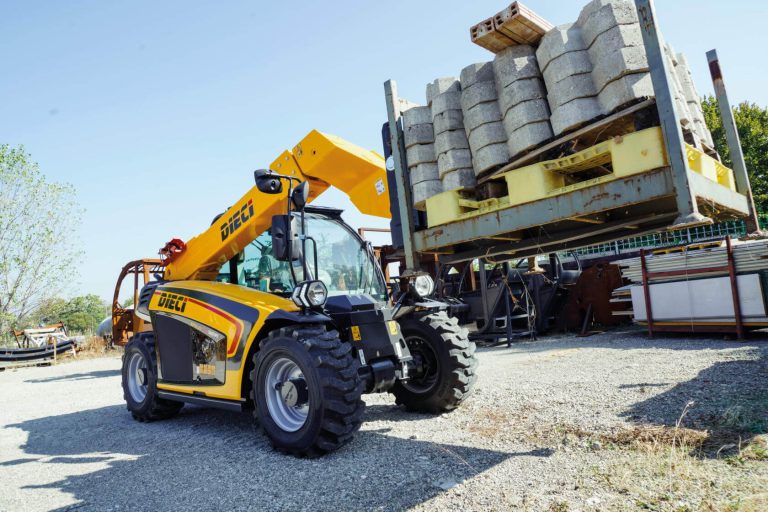Dieci Concrete Mixer Trucks
Cement and concrete are two fundamental materials on any construction site. Thanks to their hardening capability, they are used for foundations and the construction of supporting parts. For this reason it is important to prepare quality material and prepare it in the best conditions, avoiding errors, cracks or unevenness.
To always have the best cement available, optimising time and costs, it is essential to rely on professional, manageable and intuitive truck mixers. Starting from the mix, here’s how to make perfect concrete without making mistakes.
Why Use a Dieci Truck Mixer on Construction Sites
Concrete is indispensable on construction sites. A mixture of water and solid materials is mixed inside the truck mixer drum thanks to the rotating blades. Through this process it is possible to obtain a dense, homogeneous and ready-to-use product.
The main advantages of Dieci truck mixers are:
- Self-sufficiency in the preparation of the mixture. Thanks to the self-loading shovel, production can also occur in places far from concrete mixing centres, avoiding blocks or stopping phases that would require the intervention of operators.
- The large capacity – linked both to the yield capacity of the truck mixer and to the speed of the production cycle that allows 100m3 of concrete to be obtained in just 5 hours of work.
- Savings in terms of cost and labor, mixing during both transportation and on site. Machines such as the F7000 are approved for road circulation even when fully loaded. This means, it is possible to work with better organisation and time management, dedicating the right attention to each phase of the construction site.
Concrete: Mistakes to Avoid
When the concrete is mixed inside the truck mixer, it is important to correctly dose the quantities of material and avoid mixing a product that at the time of installation, is unusable.
To make excellent concrete it is essential to:
- use the right amount of water. In fact, water is the key element in making concrete strong. The liquid acts as a catalyst during the hydration phase, allowing the formation of the chemical bonds necessary for hardening of the cement. An error that can occur is using too much water, making the mixture “submerged”. This blocks the development of chemical bonds, making the product too porous and, consequently, prone to shrinkage and crack formation.
- work a dense and homogeneous substance, which therefore does not present lumps or particularly liquid areas. To make this happen it is important to rely on highly efficient construction equipment. Dieci truck mixers are equipped with spiral blades, which work the mixture in all sections. Furthermore, the high thickness of the steel used for the drum guarantees its non-deformability and durability over time.
Likewise, in the moment of installation it is important to mitigate with proper maintenance. The concrete must be poured into formwork surfaces, which prevent the evaporation of water through the external areas. Using sides made of steel, PVC or resin-coated plywood makes it possible to protect the material, avoiding excessive loss of water.
How to Pour Concrete in Winter & Summer
Climatic conditions are also an important element to take into account in order to obtain a correct curing of the concrete. During the hydration phase, the material develops its properties. To make this happen it is important to monitor the rate of hydration, which strictly depends on the humidity and heat within the surrounding environment. The ideal temperature for concrete is in fact around 10°-15°.
It is not uncommon that without some precautions, defects can occur in concrete with cold temperatures that are too high, or during rainy days. Specifically, here’s how to process concrete based on the climate:
- in winter or with very cold temperatures it is essential to prevent the soil or the mixture itself from freezing. To overcome this problem, it is ideal to cover the area before installation, to avoid it from cooling down. It is also possible to add hot water during the waiting time, so that a suitable and constant temperature is maintained throughout the process. Finally, it is possible to use accelerators that speed up the setting time. This ensures that the upper part of the concrete does not set before the lower part avoiding the formation of cracks.
- with warmer temperatures it is essential to keep the humidity of the concrete constant, to avoid any stoppages within the hydration phase. One risk factor to avoid is surface water evaporation. In this case, a weaker top layer will form. After casting it is recommended to cover it with plastic sheets, using a curing agent to keep the product adequately wet.
- to prevent problems related to rain, it is useful to promote good drainage, to avoid the presence of puddles inside the areas excavated for the base. In addition, it is critical to avoid working large amounts of rainwater into the concrete mix as it hardens and to not add solid cement to the wet surface to “absorb the water”.
Dieci also guarantees operator safety and comfort even in the coolest of temperatures. In addition to a highly insulating drum, which protects the concrete from outside temperatures, the cabin is heated and soundproofed, ensuring operator comfort.
For more information on our range of truck mixers, give us a call on 1300 888 479.






